 As a chef, one of those things that irritates me the most when people freak out or cringe when they hear of MSG in cooking. Thanks to the media who always portray half the story of MSG in whatever articles that are published, more often than not the taste enhancer is given the bad publicity than good.
As a chef, one of those things that irritates me the most when people freak out or cringe when they hear of MSG in cooking. Thanks to the media who always portray half the story of MSG in whatever articles that are published, more often than not the taste enhancer is given the bad publicity than good.During my apprentice years, a Chinese Masterchef once told me literally "no MSG, no Masterchef". His words speak of wisdom in understanding the skill of using MSG through natural occuring ingredients or as an add on ingredient during cooking process for that taste enhancement effect of the whole dish. I emphasize strongly on the word "Taste Enhancement" because there is a need to clear the air about using MSG for the above purpose and having it as a flavour substitute. To a certain extent, chefs and cooks are also responsible for the bad publicity of MSG due to a lack of knowledge in dealing with the use of this ingredient.First of all, lets look at some facts about MSG:
1) It is not a food poison. US FDA and our AVA approves of its use as a food ingredient
2) It is flavourless and has no aroma
3) Like salt, sugar and fats (oil), anything in excess is not good for your body. So is MSG
4) It has a lower level of sodium that salt
Different people have different tresholds for all kinds of taste, from salty to sweet, sour, bitter, spicy and umami. Can i blame chili as a bad ingredient if I am the kind of person that perspires profusely when my tastebuds are exposed to very spicy cuisine?
A good chef should know the art of creating the balance of taste in culinary artistry. The glutamate properties of MSG in naturally occuring ingredients or powder are able to effect the cause of salivation or mouth watering sensation when we eat such foods. For instance, if u bite into a sun ripen tomato, do u feel the urge to take a second bite because of flavour satisfaction? This urge is caused by the high natural occurence of MSG in tomatoes and in fact they are one the known vegetables with natural high content of MSG. Many chefs and hawkers try to cut corners for profit and laziness reasons. They think that if a little goes a long way, then the more the merrier which results in negative taste perceptions of this taste enhancement ingredient. Like salt and sugar, MSG does have a "saturation" point on our taste buds. Too much of it will cause our salivary glands to secrete excessive saliva thats results us to the point of feeling thirsty, hence the often mentioned Chinese Restaurant Syndrome. Good quality ingredients should form the basis of all dishes from the stocks and sauces used. A small dosage of MSG provides the dish with the essential amount of glutamates to the point of tickling our tastebuds with a gentle perception of savouriness and mouth watering effects. That is the proper way of using MSG in cooking so that it does not exceeds the excessive amounts that turns it into a negative effect on the palate. Sadly, many chefs/hawkers have yet to understand this fact or just cannot afford to have real quality ingredients in their recipes because of cost constraints caused by other fixed costs of operations like high rentals and labour wages. For example, u are more likely to get a lousy soup stock in mall operated food courts than in a neighbourhood hawkers center due the the difference of rentals that can be as much as a few thousand dollars a month. Below is an extract of a better understanding of the fifth taste Umami and more information of MSG not commonly published in main media.
Umami: The fifth taste
By Julie Cabatit-Alegre
Thursday, February 21, 2008
If it’s not sweet or sour or bitter or salty, what else could it be? Have you heard of umami? It is believed to be the fifth primary element of taste, in addition to the four basic tastes that we were taught in grade school and are familiar with.
A “new taste sensation” is how The Wall Street Journal described it. It is a “universal taste,” says Kumiko Ninomiya, director of the Umami Information Center in Tokyo, Japan. Ninomiya was the guest speaker at the first Umami Symposium in Manila held recently at the Blue Leaf Pavilion in Fort Bonifacio.
The “new taste sensation” was, in fact, identified 100 years ago by Prof. Kikunae Ikeda at the Tokyo Imperial University from experiments he conducted in 1907. He lived for two years in Germany where there were no Japanese restaurants, and it was then he felt the longing for that distinctive taste found in Japanese food.
In his experiments, Ikeda found the distinctive taste present in broth made from kombu, a type of dried seaweed found in traditional Japanese cuisine. From the kombu broth, Ikeda succeeded in extracting crystals of glutamic acid or glutamate, an amino acid, which is the building block of protein. He found that glutamate had a distinctive taste, which was different from sweet, sour, bitter, and salty. He called it umami, the Japanese term for deliciousness.
“But umami is not the same as deliciousness, although umami is part of deliciousness,” Ninomiya explains. The tasting sessions at the symposium resulted in a lively exchange among the participants, mostly food scientists and nutritionists, university professors and researchers, as well as chefs and foodies on what exactly is umami. The participants tasted dashi, which was prepared by a Japanese chef. Dashi is a clear broth, which is essential in Japanese cooking. It uses kombu as well as dried flakes from bonito, a naturally salty-tasting deep-water type of fish. Earlier, upon entering the symposium venue, the participants also took part in a taste test where they were made to sample two small bowls of tinola soup, and rate each one according to a set of questions provided. One of the bowls was umami.
The “um” factor is how culinary specialist Nancy Reyes, of the family of the iconic Aristocrat Restaurant, referred to it in her talk. “It is found all over the Filipino menu,” she says, “in adobo, sinigang, sisig, nilaga, and, of course, tinola.”
Condiments and dipping sauces are indispensable on a Filipino table, Nancy observes, and our own fish sauce or patis has been called “umami in a bottle.” Tomato is the most common ingredient used for umami. Nancy recalled how her grandmother, the venerable Aling Asyang, used to deputize her grandchildren to pick through large baskets of ripe tomatoes, choosing the ones at the peak of ripeness to be used in ginisa or the Spanish sofrito for sautéeing meat or vegetable with garlic, onion, and tomatoes in oil. “The overripe tomatoes are even more flavorful. They require shorter cooking time for the glutamates to be released,” Nancy explains.
Tomato is the most common ingredient used for umami. Nancy recalled how her grandmother, the venerable Aling Asyang, used to deputize her grandchildren to pick through large baskets of ripe tomatoes, choosing the ones at the peak of ripeness to be used in ginisa or the Spanish sofrito for sautéeing meat or vegetable with garlic, onion, and tomatoes in oil. “The overripe tomatoes are even more flavorful. They require shorter cooking time for the glutamates to be released,” Nancy explains.
“Adobo tastes better a day after it is cooked, when the glutamate is released and you get a rounded flavor that is umami,” she adds.
To enhance umami in cooking, Nancy shares the following techniques: Use heat to release the glutamate; through fermentation to produce glutamate acid (e.g. buro); add acids and pickle solution (i.e. sugar, vinegar); add onion, coconut milk and tomatoes; add MSG (monosodium glutamate).
MSG is said to be one of the most extensively researched food substances. On the question of safety when used as a flavor enhancer, Dr. Josefa Eusebio, president of the Philippine Glutamate Association and professor at UP-Los Baños, has this to say: “The body does not distinguish the source of glutamate, whether natural or manufactured. It is utilized by the cells in the small intestines. It is rapidly metabolized and 90 percent is used as energy. It does not accumulate in the blood stream. It is not toxic. There is no truth to the rumor that dogs die when burglars feed them MSG.”
Glutamate is found in mother’s milk, 10 times more than in cow’s milk. It is found in all protein-containing foods. Fermented foods are also rich in glutamate. In addition to glutamate, two other substances, which are important taste elements in natural foods — inosinate from dried bonito and guanylate from dried shiitake mushrooms — have also been identified.
Umami has been described as meaty or brothy. Parmesan cheese is said to be one of the most glutamate-rich foods, while mushrooms, particularly shiitake mushrooms, contain both glutamate and guanylate. Anything alive in the ocean is high in glutamate, and this includes seafood as well as sea plants, such as seaweed. The fermentation process in making fish sauce as well as soy sauce breaks down proteins, releasing flavorful glutamate.



A “new taste sensation” is how The Wall Street Journal described it. It is a “universal taste,” says Kumiko Ninomiya, director of the Umami Information Center in Tokyo, Japan. Ninomiya was the guest speaker at the first Umami Symposium in Manila held recently at the Blue Leaf Pavilion in Fort Bonifacio.
The “new taste sensation” was, in fact, identified 100 years ago by Prof. Kikunae Ikeda at the Tokyo Imperial University from experiments he conducted in 1907. He lived for two years in Germany where there were no Japanese restaurants, and it was then he felt the longing for that distinctive taste found in Japanese food.
In his experiments, Ikeda found the distinctive taste present in broth made from kombu, a type of dried seaweed found in traditional Japanese cuisine. From the kombu broth, Ikeda succeeded in extracting crystals of glutamic acid or glutamate, an amino acid, which is the building block of protein. He found that glutamate had a distinctive taste, which was different from sweet, sour, bitter, and salty. He called it umami, the Japanese term for deliciousness.
“But umami is not the same as deliciousness, although umami is part of deliciousness,” Ninomiya explains. The tasting sessions at the symposium resulted in a lively exchange among the participants, mostly food scientists and nutritionists, university professors and researchers, as well as chefs and foodies on what exactly is umami. The participants tasted dashi, which was prepared by a Japanese chef. Dashi is a clear broth, which is essential in Japanese cooking. It uses kombu as well as dried flakes from bonito, a naturally salty-tasting deep-water type of fish. Earlier, upon entering the symposium venue, the participants also took part in a taste test where they were made to sample two small bowls of tinola soup, and rate each one according to a set of questions provided. One of the bowls was umami.
The “um” factor is how culinary specialist Nancy Reyes, of the family of the iconic Aristocrat Restaurant, referred to it in her talk. “It is found all over the Filipino menu,” she says, “in adobo, sinigang, sisig, nilaga, and, of course, tinola.”
Condiments and dipping sauces are indispensable on a Filipino table, Nancy observes, and our own fish sauce or patis has been called “umami in a bottle.”
 Tomato is the most common ingredient used for umami. Nancy recalled how her grandmother, the venerable Aling Asyang, used to deputize her grandchildren to pick through large baskets of ripe tomatoes, choosing the ones at the peak of ripeness to be used in ginisa or the Spanish sofrito for sautéeing meat or vegetable with garlic, onion, and tomatoes in oil. “The overripe tomatoes are even more flavorful. They require shorter cooking time for the glutamates to be released,” Nancy explains.
Tomato is the most common ingredient used for umami. Nancy recalled how her grandmother, the venerable Aling Asyang, used to deputize her grandchildren to pick through large baskets of ripe tomatoes, choosing the ones at the peak of ripeness to be used in ginisa or the Spanish sofrito for sautéeing meat or vegetable with garlic, onion, and tomatoes in oil. “The overripe tomatoes are even more flavorful. They require shorter cooking time for the glutamates to be released,” Nancy explains.“Adobo tastes better a day after it is cooked, when the glutamate is released and you get a rounded flavor that is umami,” she adds.
To enhance umami in cooking, Nancy shares the following techniques: Use heat to release the glutamate; through fermentation to produce glutamate acid (e.g. buro); add acids and pickle solution (i.e. sugar, vinegar); add onion, coconut milk and tomatoes; add MSG (monosodium glutamate).
MSG is said to be one of the most extensively researched food substances. On the question of safety when used as a flavor enhancer, Dr. Josefa Eusebio, president of the Philippine Glutamate Association and professor at UP-Los Baños, has this to say: “The body does not distinguish the source of glutamate, whether natural or manufactured. It is utilized by the cells in the small intestines. It is rapidly metabolized and 90 percent is used as energy. It does not accumulate in the blood stream. It is not toxic. There is no truth to the rumor that dogs die when burglars feed them MSG.”
Glutamate is found in mother’s milk, 10 times more than in cow’s milk. It is found in all protein-containing foods. Fermented foods are also rich in glutamate. In addition to glutamate, two other substances, which are important taste elements in natural foods — inosinate from dried bonito and guanylate from dried shiitake mushrooms — have also been identified.
Umami has been described as meaty or brothy. Parmesan cheese is said to be one of the most glutamate-rich foods, while mushrooms, particularly shiitake mushrooms, contain both glutamate and guanylate. Anything alive in the ocean is high in glutamate, and this includes seafood as well as sea plants, such as seaweed. The fermentation process in making fish sauce as well as soy sauce breaks down proteins, releasing flavorful glutamate.



The umami taste eliminates the need to use salt or oil and enables us to eat healthy. Our tongue acts as a barometer for taking in necessary nutrients. “You should try to be taste-conscious,” Ninomiya remarks. “Tasting is believing.”
Monosodium Glutamate (Extract from Food Product Design)
Many experts say that MSG should be looked at carefully assuming that its use is within the acceptable parameters. In other words, the designer must be sure its use is permissible with any label or marketing claims.
As with salt, MSG derived from naturally fermented sources has been used for centuries to improve the acceptance of Asian foods. In 1908, when extracting the glutamic acid salts from sea tangle, a type of seaweed, Kikunae Ikeda, Ph.D., called the flavor contribution "umami." Still under extensive study to elucidate the sensory mechanisms, it presents an interesting sensory, product development and public relations challenge. According to Franny Hildabrand, manager of technical services, technical products for Integrated Ingredients, Bartlesville, OK, it is the combination of taste and feeling factors that contribute to the gustatory experience. (For an extensive discussion, see Umami: a Basic Taste edited by Kawamura and Kate.)
MSG has been surrounded with negative publicity linking it with a number of adverse physical effects including headaches, dizziness and chest pain, popularized as the "Chinese Restaurant Syndrome." Because of the lack of scientific consensus on these effects, in 1995 the U.S. Food and Drug Administration (FDA) contracted the Life Sciences Research Office (LSRO) of the Federation of American Studies for Experimental Biology (FASEB) to analyze the safety issues related to the consumption of MSG and other food sources of glutamate based on the available scientific literature.
The Expert Panel convened by LSRO/FASEB concluded that the oral ingestion of more than 3 grams of monosodium glutamate in the absence of food can cause a sensitive subgroup of the general population to respond "generally within one hour of exposure, with manifestations of the MSG symptom complex" (their term for what has been called the "Chinese Restaurant Syndrome"). The report also indicated that certain asthmatics may experience bronchospasms, or difficulty breathing, after ingesting MSG in doses equal to or greater than 2.5 grams.
However, the Expert Panel also concluded that to date, no scientifically valid studies have been performed to confirm the existence of any of the hypothetical mechanisms that underlie adverse responses to MSG. They also stated that "no evidence exists to support the ability of orally ingested glutamate to produce neurotoxic or lesioning effects in humans." The panel could find no links to Alzheimer's or any other long-term or chronic disease. This has led the FDA to reaffirm that MSG and related substances should be considered safe ingredients "for most people when eaten at customary levels," according to an FDA position paper. FDA has also said that "we believe there is no connection between MSG and asthma."
Aileen Peters, vice president, public affairs, Ajinomoto USA, Teaneck, NJ, doesn't see the report as negative for MSG: "FDA concluded that MSG is safe for consumption for the general public. The FASEB report suggested further study because there was support for the concept that 3 grams on an empty stomach might cause some small portion of the population to have a reaction. The other question mark was a potential link between MSG and asthma Since that time the FDA has reviewed the data and come out very strongly saying they did not concur. The science on asthma is pretty conclusive."
Peters also notes that yet another study is underway at Scripps Clinic and Research Foundation, La Jolla, CA, that is expected to provide more evidence. She expects results of this study to be released in March.
Because the data indicate that some portion of the population may experience a reaction to MSG, the FDA has advanced notice of proposed rulemaking that may affect labeling requirements for foods containing free glutamates. It would require the labeling of foods containing more than 200 mg of glutamate per serving from any source. The reader is referred to the Federal Register, Vol. 61, No. 178, September 12, 1996 for more details. No final rules have been issued as of this writing.
Currently the FDA requires that when MSG is added to food, it must appear only in the ingredient legend. However, products labeled "no MSG" or "no added MSG" must not contain any ingredients that are considered sources of free glutamates such as hydrolyzed protein.
Peters notes that the industry is continuing consumer information programs "rather aggressively because the American public was not very well informed on what MSG was and why it was used. You avoid a problem by informing consumers in advance. You simply can't scare consumers if they know that the volume of science is behind MSG's safe use."
Monosodium glutamate is a powerful tool and, if within the agreed upon boundaries of acceptable solutions, should be considered a key test variable. However, if MSG can't be used to enhance flavor, what are the alternative choices? Product developers can turn to a variety of hydrolyzed vegetable proteins, yeast extracts, and 5' Prime nucleotides. However, the use of these ingredients may also be affected by consumer concerns regarding glutamates and FDA rulings on labeling.
Many experts say that MSG should be looked at carefully assuming that its use is within the acceptable parameters. In other words, the designer must be sure its use is permissible with any label or marketing claims.
As with salt, MSG derived from naturally fermented sources has been used for centuries to improve the acceptance of Asian foods. In 1908, when extracting the glutamic acid salts from sea tangle, a type of seaweed, Kikunae Ikeda, Ph.D., called the flavor contribution "umami." Still under extensive study to elucidate the sensory mechanisms, it presents an interesting sensory, product development and public relations challenge. According to Franny Hildabrand, manager of technical services, technical products for Integrated Ingredients, Bartlesville, OK, it is the combination of taste and feeling factors that contribute to the gustatory experience. (For an extensive discussion, see Umami: a Basic Taste edited by Kawamura and Kate.)
MSG has been surrounded with negative publicity linking it with a number of adverse physical effects including headaches, dizziness and chest pain, popularized as the "Chinese Restaurant Syndrome." Because of the lack of scientific consensus on these effects, in 1995 the U.S. Food and Drug Administration (FDA) contracted the Life Sciences Research Office (LSRO) of the Federation of American Studies for Experimental Biology (FASEB) to analyze the safety issues related to the consumption of MSG and other food sources of glutamate based on the available scientific literature.
The Expert Panel convened by LSRO/FASEB concluded that the oral ingestion of more than 3 grams of monosodium glutamate in the absence of food can cause a sensitive subgroup of the general population to respond "generally within one hour of exposure, with manifestations of the MSG symptom complex" (their term for what has been called the "Chinese Restaurant Syndrome"). The report also indicated that certain asthmatics may experience bronchospasms, or difficulty breathing, after ingesting MSG in doses equal to or greater than 2.5 grams.
However, the Expert Panel also concluded that to date, no scientifically valid studies have been performed to confirm the existence of any of the hypothetical mechanisms that underlie adverse responses to MSG. They also stated that "no evidence exists to support the ability of orally ingested glutamate to produce neurotoxic or lesioning effects in humans." The panel could find no links to Alzheimer's or any other long-term or chronic disease. This has led the FDA to reaffirm that MSG and related substances should be considered safe ingredients "for most people when eaten at customary levels," according to an FDA position paper. FDA has also said that "we believe there is no connection between MSG and asthma."
Aileen Peters, vice president, public affairs, Ajinomoto USA, Teaneck, NJ, doesn't see the report as negative for MSG: "FDA concluded that MSG is safe for consumption for the general public. The FASEB report suggested further study because there was support for the concept that 3 grams on an empty stomach might cause some small portion of the population to have a reaction. The other question mark was a potential link between MSG and asthma Since that time the FDA has reviewed the data and come out very strongly saying they did not concur. The science on asthma is pretty conclusive."
Peters also notes that yet another study is underway at Scripps Clinic and Research Foundation, La Jolla, CA, that is expected to provide more evidence. She expects results of this study to be released in March.
Because the data indicate that some portion of the population may experience a reaction to MSG, the FDA has advanced notice of proposed rulemaking that may affect labeling requirements for foods containing free glutamates. It would require the labeling of foods containing more than 200 mg of glutamate per serving from any source. The reader is referred to the Federal Register, Vol. 61, No. 178, September 12, 1996 for more details. No final rules have been issued as of this writing.
Currently the FDA requires that when MSG is added to food, it must appear only in the ingredient legend. However, products labeled "no MSG" or "no added MSG" must not contain any ingredients that are considered sources of free glutamates such as hydrolyzed protein.
Peters notes that the industry is continuing consumer information programs "rather aggressively because the American public was not very well informed on what MSG was and why it was used. You avoid a problem by informing consumers in advance. You simply can't scare consumers if they know that the volume of science is behind MSG's safe use."
Monosodium glutamate is a powerful tool and, if within the agreed upon boundaries of acceptable solutions, should be considered a key test variable. However, if MSG can't be used to enhance flavor, what are the alternative choices? Product developers can turn to a variety of hydrolyzed vegetable proteins, yeast extracts, and 5' Prime nucleotides. However, the use of these ingredients may also be affected by consumer concerns regarding glutamates and FDA rulings on labeling.












.jpg)
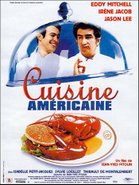






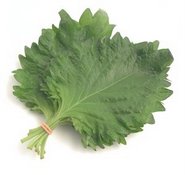



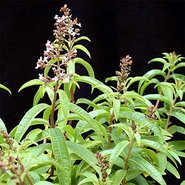
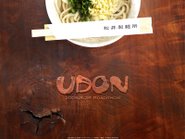










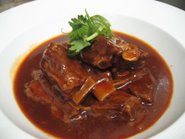

























































2 comments:
Yes, MSG has gotten too much of a bad rap! :) I love it, actually! Mmmmh!
coolchef
thank you for this enlightenment.
Post a Comment